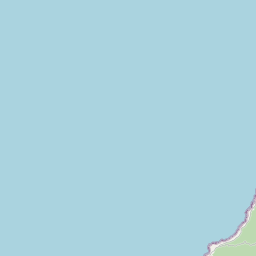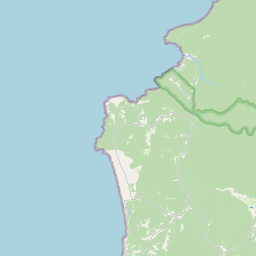Chile, Valdivia
Updated: 2024-09-30
About
The currency used in Valdivia is Chilean Peso (CLP).
Residents of Chile: Approximately 19 million.
Residents of Valdivia: Roughly 140,000.
Languages
Spanish (Main language)
Spanish is the official language and is spoken by nearly everyone in Valdivia, making it essential for communication.
Mapudungun
The indigenous Mapuche language, spoken by a minority but vital to understanding the region's cultural heritage.
Cost of living
What to do
To be aware of
Climate
Must visit places
Mercado Municipal
4.5 out of 5 rating
A vibrant market offering fresh local produce, seafood, and traditional Chilean dishes.
Calle Yungay 1526, Valdivia, Los Ríos, Chile
Prices: $5-$20
Niebla Fort
4.7 out of 5 rating
A historic fort with rich colonial history and stunning views of the Pacific Ocean.
Castillo de Niebla, Niebla, Los Ríos, Chile
Prices: $3
Bosque de los Ciervos
4.3 out of 5 rating
A serene park known for its diverse wildlife and tranquil walking paths.
Río Cruces, Valdivia, Los Ríos, Chile
Prices: Free
Kunstmann Brewery
4.8 out of 5 rating
A traditional brewery offering guided tours and tastings of homemade craft beers.
Ruta T-350 km. 8,5 Camino a Niebla, Valdivia, Los Ríos, Chile
Prices: $10-$30
Eco-Parque Otto
4.6 out of 5 rating
A family-friendly park with nature trails, mini-zoo, and picnic areas.
Ruta 352, Valdivia, Los Ríos, Chile
Prices: $7
Food in Valdivia
Food prices
Must visit restaurants
La Cervecería Kunstmann
4.8 out of 5 rating
Experience the best of German-Chilean fusion at Kunstmann, home to one of Chile's most famous beer brands. Here, you can enjoy a variety of craft beers made right in Valdivia alongside hearty, traditional dishes that pair perfectly with a cold brew.
Ruta T 350, km 2, Valdivia, Chile
Café Haussmann
4.6 out of 5 rating
A charming spot known for its delightful array of pastries and hearty traditional German sandwiches called ‘crudos.’ Café Haussmann offers a warm, cozy setting perfect for starting your day or enjoying an afternoon break.
San Carlos 2763, Valdivia, Chile
New Orleans Restaurante
4.5 out of 5 rating
This restaurant brings a taste of the American South to Valdivia, offering an eclectic menu featuring specialties such as jambalaya and gumbo. The vibrant atmosphere and live music on weekends create an unforgettable dining experience.
Pérez Rosales 787, Valdivia, Chile
La Última Frontera
4.7 out of 5 rating
Known for its artistic flair and creative dishes, La Última Frontera offers a menu that mixes international cuisine with local flavors. The relaxed atmosphere and friendly service make it a favorite among locals and travelers alike.
General Lagos 73, Valdivia, Chile
Arrabal
4.4 out of 5 rating
Arrabal offers a sophisticated take on traditional Chilean cuisine, focusing on fresh, local ingredients to create dishes that are both modern and rooted in regional flavors. The ambiance is intimate and chic, making it perfect for a special meal.
General Lagos 1578, Valdivia, Chile
Shopping
Shopping Prices
Animals and nature
Religion
Tourism and locals
Nightlife scene
Art, Culture and Architecture
Find Upcoming Events
Five facts about Valdivia
Your experience matters! Share your story, thoughts, or tips with other travelers.
Loading related cities ...
Frequently asked questions
What is the best time of year to visit new destinations?
The best time to visit a destination depends on its climate and your preferences. Generally, spring and fall offer pleasant weather and fewer tourists, while summer may bring larger crowds and higher prices. Always check for seasonal events and holidays.
How can I find the top attractions in a city?
You can find the top attractions by checking travel guides like Cityexplorer.io, blogs, or apps like TripAdvisor. Our website offers curated lists of popular landmarks, cultural sites, and hidden gems for each city.
How do I get around a city?
Most cities offer public transportation options like buses, subways, or trams. Taxis, rideshare services, and bike rentals are also common. Some cities are walkable, making it easy to explore on foot.
How can I stay safe while traveling abroad?
To stay safe while traveling abroad, research your destination in advance to understand local customs and any potential risks. Keep your valuables secure, stay aware of your surroundings, use reliable transportation, and avoid risky areas, especially at night. It's also wise to register with your embassy if possible.
What should I pack for a city trip?
Pack comfortable walking shoes, appropriate clothing for the weather, a travel adapter (if needed), a reusable water bottle, and any personal items like medications. For international travel, don’t forget important documents like your passport and travel insurance.
How can I stay safe while traveling?
To stay safe, research the city beforehand, avoid unfamiliar areas at night, and keep your valuables secure. Use reputable transportation services, and always have a backup plan for communication, such as a local SIM card or Wi-Fi access.
How can I stay healthy while traveling?
To stay healthy while traveling, practice good hygiene, such as frequent handwashing and sanitizing. Stay hydrated, eat balanced meals, and get enough rest. If necessary, consult a healthcare provider about vaccinations or medications required for your destination.
How can I ensure my accommodation is safe?
To ensure your accommodation is safe, read reviews from previous guests, choose reputable hotels or hostels, and check for security features such as locks, safes, and 24-hour front desks. Upon arrival, familiarize yourself with emergency exits and procedures.
Are language barriers an issue when traveling?
In major cities, many locals speak basic English, especially in tourist areas. However, learning a few key phrases in the local language can enhance your experience and help you navigate more easily.
How can I avoid tourist traps?
Avoid tourist traps by researching your destination and seeking recommendations from locals or travel communities. Opt for off-the-beaten-path attractions, authentic dining spots, and lesser-known neighborhoods.
What should I do if I lose my passport while traveling?
If you lose your passport while traveling, report the loss to local authorities and contact your country's nearest embassy or consulate immediately. They can assist with obtaining a replacement passport or emergency travel document.
Do I need travel insurance?
Yes, travel insurance is recommended to cover unforeseen events like medical emergencies, trip cancellations, or lost luggage. It’s a small investment that can save you from significant expenses while traveling.
What is the best way to exchange currency?
The best way to exchange currency is usually through local ATMs using your debit card, as they often offer competitive exchange rates. Avoid airport exchanges and currency kiosks, as they may charge high fees. Consider getting a travel credit card with no foreign transaction fees.
How can I manage jet lag effectively?
To manage jet lag, adjust your sleep schedule before you depart, stay hydrated, and avoid caffeine and alcohol. Upon arrival, try to get exposure to natural light, and consider taking short naps if needed. Gradually adjust to the local time to ease the transition.











